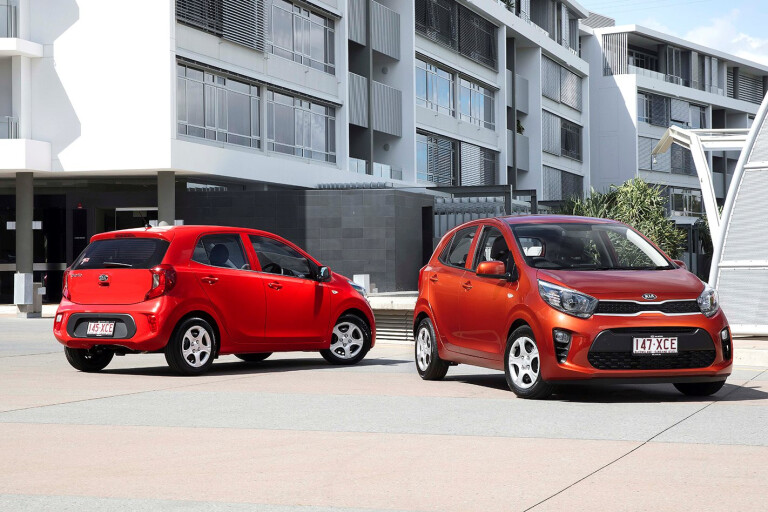Reviews

Gallery1
Back for another generation, Kia’s petite Picanto lobbed into Australian showrooms this month as the Korean brand’s smallest and cheapest offering.
And nearly everything is new. Well, everything besides its carry-over engine and automatic transmission. The platform, interior, suspension and bodywork are all box-fresh for the 2017 Kia Picanto, and with so many changes there’s more than a few things that you may not already be aware of. Here’s a selection of them:
- The previous-generation Picanto was only here for about 12 months, and Kia Australia freely admits it was something of an experiment to see if Australians had a meaningful appetite for cars in the ‘microcar’ class. That experiment was a success, because the Picanto has returned for a new generation with even more equipment, a new manual-equipped entry point and a more grown-up and mature design than before.
- ‘Picanto’ may sound exotic and foreign, but it doesn’t actually translate into anything. It is, however, a not-so-subtle play on the Spanish word ‘picante’, which means spicy. Is that an accurate descriptor for the Picanto? We’ll leave that up to you.
- Built in Korea, Kia Australia didn’t just take the Korean-market Picanto and ship it over wholesale. The company’s local arm assigned its own chassis engineers to develop an Australia-specific suspension tune for the Picanto to help it deal with our unique road network. The result is a suspension that should deal with everything Australian drivers can throw at it – from cracked urban pavement to twisty mountain roads.
- The previous model was only ever available with a four-speed automatic, but its replacement now has the option of a five-speed manual. Pricing for the shift-it-yourself Picanto is listed at $14,190 retail – which theoretically makes it more expensive than the $15,690 on-the-road Picanto automatic – but Kia slyly suggests that buyers will be able to negotiate a sharper deal on the manual if they chat to their local dealer.
- The chassis uses a higher proportion of high-strength steel, with 44 percent of its bodyshell being made of the extra-durable metal. The result is not only a car that is stronger and safer in a crash, but a bare bodyshell that weighs 7kg less than before thanks to less metal being needed.
- Torque vectoring is something you’d typically find in high-end performance cars, but the basic technology has already trickled down to lower-echelon cars. By braking the left and right wheels independently steering input is detected, the Picanto’s on-board computer can help ‘pull’ the car around corners and reduce understeer. The result is impressively sharp handling for what is essentially a fairly basic compact hatch.
Please enable JavaScript to view the comments powered by Disqus.
COMMENTS